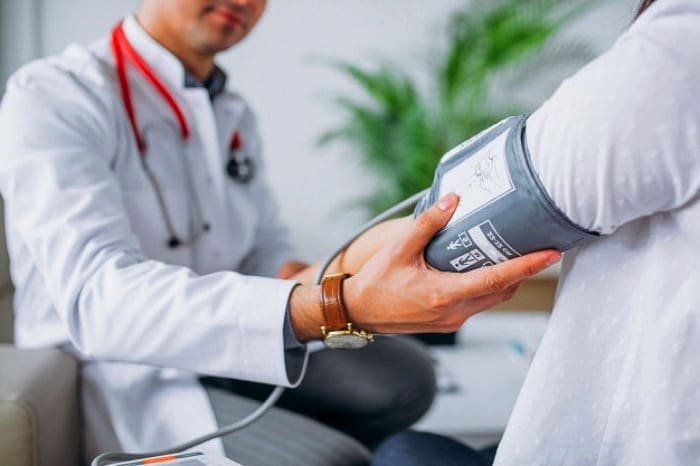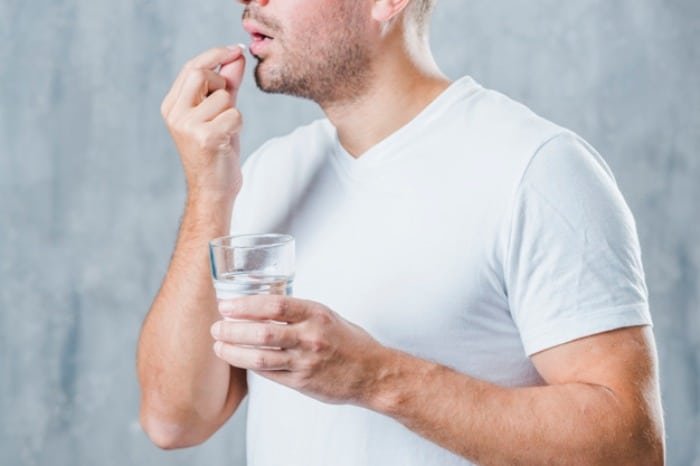Orthostatic Hypotension (Low Blood Pressure)Blood PressureOrthostatic Hypotension
Orthostatic hypotension, also known as positional low blood pressure, is a type of low blood pressure that occurs when you stand up from a sitting or lying position. It may make you feeldizzyor confused, and you might even faint.
This dropin positional blood pressurecan be mild and last for less than a few minutes; however, if it persists for a long time, it could indicate more serious issues.
Acute orthostatic hypotension often occurs due to obvious triggers like dehydration or prolonged resting and can usually be treated easily. Chronic orthostatic hypotension usually signals another health issue, so its treatment varies.
Symptoms of Positional Blood Pressure:
Signs and symptoms of positional low blood pressure include:
– Feeling dizzy or lightheaded after standing up
– Blurred vision
– Weakness
– Excessive fatigue
– Confusion
–Nausea
When to See a Doctor for Positional Blood Pressure?
Dizziness or confusion might be relatively mild, triggered by slight dehydration orlow blood sugarand could also happen after standing up following prolonged sitting. If these symptoms occur occasionally, there’s likely no reason to worry.
As mentioned in the health section ofSelMagzit’s crucial to see a doctor for recurrent orthostatic hypotension symptoms, as they can lead to serious problems.
If you lose consciousness, even for a few seconds, it’s essential to visit a doctor and consider how long it lasted and what you were doing at that time. Keep a record of your symptoms. If these occur in dangerous situations, like driving, discuss it with your doctor.

What Causes Positional Blood Pressure Issues?
Causes of Positional Blood Pressure Drops:
When you stand up, gravity causes blood to pool in your legs and abdomen, reducing blood flow back to the heart. Typically, specific cells (baroreceptors) near your heart and neck arteries detect this drop in blood pressure.
Baroreceptors send signals to your brain that make your heart pump faster and push more blood, stabilizing your blood pressure. These cells also constrict blood vessels to raise blood pressure.
Positional blood pressure drops occur when something disrupts your body’s natural process for counteracting low blood pressure. Many different conditions can lead to orthostatic hypotension, including:
- Dehydration
- Fever
- Vomiting
- Inadequate fluid intake
- Severe diarrhea
Intense exercise with excessive sweating
Mild dehydration can lead to symptoms like weakness, dizziness, and fatigue.
Heart problems:
Some heart conditions that can lead to low blood pressure includevery low heart rate (bradycardia), heart valve issues,heart attacks,and heart failure. This issue prevents your body from pumping enough blood when you stand.Endocrine disorders:
Thyroid issues, kidney failure (Addison’s disease), and low blood sugar (hypoglycemia) can lead to orthostatic hypotension, affecting the nerves that help regulate blood pressure.
Nervous system disorders:
Some nervous system disorders, like
Parkinson’s disease,multiple system atrophy, Lewy body dementia, pure autonomic failure, and amyloidosis can disrupt your normal blood pressure regulation.After eating:
Some people may experience slightly lower blood pressure (very low blood pressure) after meals. This is more common in older adults.
Risk factors for positional blood pressure:
Risk factors for orthostatic hypotension include:
Age:
Orthostatic hypotension is common in individuals aged 65 and older.
Special cells (baroreceptors) near the heart and neck arteries that regulate blood pressure can slow down as you age. It might also become harder for an older heart to keep up a fast heartbeat and compensate for low blood pressure.
Medications:
These include medications used for treating
high blood pressureor heart diseases, such as diuretics, beta-blockers, antihypertensive drugs, calcium channel blockers, ACE inhibitors, and nitrates.Other medications that may increase the likelihood of developing orthostatic hypotension include those used for treating Parkinson’s disease, certain antidepressants, specific psychiatric drugs, muscle relaxants, and prescribed medications for erectile dysfunction.
Using blood pressure medications alongside over-the-counter drugs may also lead to low blood pressure.Certain diseases:Some heart issues, such as valve disorders, heart attacks, and heart failure; some nervous system disorders, like
diabetes,
and conditions that damage nerves (
neuropathy) can increase the risk of low blood pressure.Excessive heat exposure:Staying in a warm environment can lead to excessive sweating and potentially result indehydration
which can drop your blood pressure.
Long bed rest:If you lie in bed for a long time, you might become weak. When you try to stand up, you may experience orthostatic hypotension.Pregnancy:
During pregnancy, your circulatory system expands quickly, and your blood pressure is likely to drop. This is normal, and blood pressure usually returns to pre-pregnancy levels after delivery.
Is positional blood pressure during pregnancy normal?
Complications and Risks of Low Positional Blood Pressure:Chronic orthostatic hypotension can lead to serious issues, especially in older adults. These include:
Falling:Falling due to fainting (syncope) is a common complication among those with orthostatic hypotension.Stroke:

Blood pressure fluctuations while standing and sitting from orthostatic hypotension can pose a risk for stroke due to reduced blood flow to the brain.
Cardiovascular diseases:
Orthostatic hypotension can be a risk factor for heart and vascular conditions like
chest pain,
heart failure, or heart problems.
Diagnosing Positional Blood Pressure:
The main goal of assessing orthostatic hypotension is to find the underlying cause and determine appropriate treatment for any health issues that may be causing your low blood pressure. The cause is not always unknown, and your doctor might review your medical history, check your symptoms, and perform a physical exam to help diagnose your condition.
Your doctor may also recommend one or more of the following assessments mentioned in the health section of SelMagz regarding low blood pressure reduction:
Blood pressure measurement:Your doctor will measure your blood pressure while you are sitting and standing, comparing the numbers. Orthostatic hypotension can be diagnosed if there is a 20 mmHg (mm of mercury) drop in your systolic blood pressure or a 10 mmHg drop in your diastolic blood pressure for 2 to 5 minutes while standing or if symptoms are present upon standing.Blood tests:
These tests can provide information about your overall health, including low blood sugar (hypoglycemia) and red blood cell levels (
anemia
) both of which can cause low blood pressure.
Electrocardiogram (ECG or EKG): This non-invasive test checks the heart’s rhythm or structure and assesses issues related to blood and oxygen supply to your heart muscles.
During this test, sticky pads (electrodes) are attached to the chest, arms, and legs. These pads detect your heart’s electrical signals and record them on graph paper or a screen.
Sometimes, heart rhythm disorders come and go, and the ECG doesn’t reveal any problems. If this happens, you may be asked to wear a 24-hour monitor to record your heart’s electrical activity.
Echocardiogram:This non-invasive test uses sound waves to create a video image of your heart. Sound waves are emitted from a transducer placed on your chest.The sound waves reflecting off your heart and bouncing back from your chest wall are electronically processed to provide video images of your heart to identify underlying heart disease.
Stress test:
A stress test is done when you exercise, such as walking on a treadmill, or you might be given medication to make your heart work harder if you cannot exercise. While your heart works harder, it will be monitored with an electrocardiogram, echocardiogram, or other tests.
Tilt table test:
The tilt table test assesses how your body responds to changes in position. You’ll lie on a flat table that tilts your upper body up, simulating a move from horizontal to standing. Your blood pressure will be regularly measured as you tilt.
Valsalva maneuver:
This non-invasive test examines your autonomic nervous system by analyzing heart rates and blood pressure after several deep breathing cycles. You’ll take deep breaths and exhale through your lips as if trying to inflate a balloon.
Treatment for Positional Blood Pressure:The goal of treating orthostatic hypotension is to restore normal blood pressure. This generally involves increasing blood volume, reducing blood pooling in the legs, and helping blood vessels to expand and circulate blood throughout the body.
To reduce mild orthostatic hypotension, one of the easiest treatments is to sit or lie down immediately after feeling dizzy. Your symptoms will gradually ease from there.
When low blood pressure is caused by medication, treatment usually involves adjusting the dosage or stopping the medication altogether.
Treatment for orthostatic hypotension includes:
Lifestyle changes:
Your doctor may recommend several lifestyle changes, including drinking enough water, avoiding excessive heat, elevating the head of your bed, avoiding crossing your legs while sitting, and rising slowly.
If you don’t have high blood pressure, your doctor may suggest increasing salt in your diet. If your blood pressure drops after eating, your doctor might recommend small, low-carb meals.
Wearing compression stockings:
Compression stockings and bands on the legs or abdomen may help reduce blood pooling in the legs and alleviate orthostatic hypotension symptoms.
Medications:
Various medications, whether used alone or in combination, can be used to treat orthostatic hypotension.
For instance, medications are often used to help increase blood volume, which raises blood pressure. Midodrine increases blood pressure by constricting your blood vessels.
Droxidopa (Northera) can be prescribed for treating orthostatic hypotension related to Parkinson’s disease, multiple system atrophy, or autoimmune failure.
Other medications, such as pyridostigmine (Regonol, Mestinon), non-steroidal anti-inflammatory drugs (NSAIDs), caffeine, and epoetin (EpoGen, Procrit, etc.) are sometimes used alone or with others for those who don’t respond to lifestyle changes or other medications.
Managing Medication for Positional Blood Pressure
Lifestyle and Home Remedies for Positional Blood Pressure:
Increase dietary salt:
This should be done carefully and only after discussing it with your doctor. The health section of SelMagz points out that excessive salt can raise your blood pressure to unhealthy levels, creating serious and new health risks.
Eat small meals:
If your blood pressure drops after meals, your doctor might recommend small, low-carb meals.
Healthy fats are a vital part of your diet:

Healthy fats are found in
coconut,
olives,
avocados,
their oils, butter, and vegetable oils as well as animal fats.
Omega-3 fatty acids
and conjugated linoleic acid (CLA), found in salmon and grass-fed meat and dairy, have tremendous benefits.
These healthy fats provide the body with an efficient source to combat inflammation and support brain function.You should avoid refined sugars and grains, which can spike blood sugar levels and create more acidity in tissues. Additionally, stay away from harmful fats like trans fats and highly processed oils. They can be very damaging to your body.Ask about supplements:Both anemia andvitamin B-12 deficiencies can affect blood flow and symptoms of orthostatic hypotension, so iron and vitamin supplements might be helpful if you’re severely deficient.Drink plenty of fluids:Staying hydrated can help prevent low blood pressure symptoms. Drink plenty of water when standing or engage in activities that don’t provoke your symptoms.Adding lemon juice to your water is an excellent strategy:Lemons are naturally high in vitamin C, citrus bioflavonoids, and key electrolytes like
potassium
and
magnesium.
The combination of vitamin C and bioflavonoids has numerous health benefits, including enhanced oxygen delivery to tissues.Exercise:Regular aerobic exercises can help reduce depressive symptoms. Avoid exercising in hot and humid weather. Stretch your leg muscles before sitting.down. If symptoms hit, tighten your thighs and strengthen your abdominal and buttock muscles. Squat,
walk
and stand on your tiptoes.
Avoid bending over:
If something falls on the floor, squat on your knee to pick it up.Stand up slowly:You can reduce your dizziness and lightheadedness by standing up slowly. Also, when getting out of bed, sit on the edge of your bed for a minute first.Move your legs while standing:If you experience symptoms while standing, scissor your thighs together and push, or place one foot on a ledge or chair while leaning forward as far as possible. This action boosts blood flow from your legs to your heart.We hope that by following the suggested treatments, you can greatly reduce your symptoms and signs of the condition.8 Effective Treatments for Low Blood Pressure
1. Herbs:
Herbs not only raise blood pressure but also support the kidneys, liver, and heart. These organs can be affected by low blood pressure.Suitable herbs for low blood pressure include: turmeric, cinnamon, ginger, pepper, cardamom, hawthorn, Buzidan, and Indian hyacinth.2. Yoga:
Yoga calms the mind and regulates blood pressure by balancing the central nervous system that controls stress.
Yoga can combat the causes of low blood pressure and stabilize your blood pressure. Effective techniques for low blood pressure include: Uttanasana, Mukha Adho, Supta Baddha Konasana, Viparita Karani, and Savasana. Some Pranayamas include Bhastrika Pranayama, Anulom Vilom Pranayama, Bhramari Pranayama, and Udgita Pranayama.
3. Acupuncture:
Low blood pressure can cause symptoms due to inadequate Qi and blood flow through arteries and veins. The blood flow is so low that it can’t transport enough oxygen and
nutrients
to vital organs such as the brain, heart, and kidneys.
This causes the affected person to feel tired, dizzy, weak, and
sleepy
, even after proper rest. A comprehensive approach to reducing blood pressure using acupuncture and acupressure improves blood flow naturally.
4. Reflexology:
Body organs have reflex points in our feet and hands, so stimulating these points can heal the responsible organs. Reflexology can successfully treat low blood pressure. It is simple and has no side effects with many benefits for overall health.
5. Stabilizing Blood Sugar:
Maintaining stable blood sugar levels is essential for alleviating this issue. Processed foods, carbohydrates, and sugars lead to unstable blood sugar. Unstable blood sugar increases inflammation, causes hormonal imbalances, and negatively affects our wellbeing.
To balance and stabilize blood sugar levels, you should eat a good meal every two hours.
The best foods for blood sugar stability are healthy fats like coconut, avocados, olives, and
olive oil,grass-fed butter, andnon-farmed eggs.
Herbs and spices like turmeric and cinnamon, along withapple cider vinegarand lemons are excellent for balancing blood sugar levels.
Green tea
and coffee are the best beverages for helping to stabilize blood sugar. If you tend to react negatively to
coffee,
it’s best to avoid it.
Low trace minerals and electrolytes:
Having adequate amounts of low trace minerals and electrolytes in your diet is crucial for enhancing this problem. Low trace minerals are essential nutrients needed for health but only in small amounts. These include iron, copper, iodine, fluoride, chromium, molybdenum, selenium, and zinc. Imbalances of these minor elements can increase the risk factors for several diseases.Maintaining a balance of various electrolytes is also vital for healthy body function, and as noted in the health section of SelMagz, common electrolytes include sodium, potassium, calcium, magnesium, chloride, and phosphate.To maintain proper electrolyte balance in the body, add natural salt (Himalayan pink salt or Celtic gray salt) to water. Increasing salt consumption from 3000 to 10,000 mg daily is recommended for optimal intake. Drinking dilutedorganic vegetable or chicken broth, due to its rich mineral content, is also beneficial.6. Reducing Stress:Increased stress hormone
causes the adrenal glands to work harder, weakening immunity, reducing digestive function, causing fatigue, and impacting blood pressure. Taking steps to reduce stress and lower cortisol levels throughout the day is essential.Following a balanced diet and managing blood sugar levels are two effective strategies to reduce stress’s impact on the body. Other powerful foundational techniques include deep breathing exercises, exposure to sunlight, Epsom salt baths, and dry brushing. Practicing these stress reduction strategies daily promotes the body’s capabilities.7. Improving Bowel Movements:Regular bowel movements are important for improving low blood pressure. We should have bowel movements two to three times a day since our bodies naturally eliminate what has been ingested within 12 to 24 hours.
Regular bowel movements are essential for detoxifying our bodies. When we experience
constipation
and have trouble emptying our bowels, digested food can create a breeding ground for harmful microbes.
These harmful microbes produce toxins that lead to inflammation. Adopting an anti-inflammatory diet high in fiber will enhance bowel movement. Good fiber sources include chia and flax seeds. Using bone broth, fermented foods, and probiotics will also aid in improving bowel movement.How to Treat Positional Blood Pressure Drops?8. Deep Breathing:One essential aspect of physical health is breathing. Tissue oxygenation through breathing is critical for human function, energy, and performance. Deep breathing is an effective strategy for managing low blood pressure. Thoughtful deep breathing has many health benefits.It helps lower blood pressure, releases tension, calms the mind and body, relieves pain, and provides a
massage
to your organs. It also strengthens the lungs, detoxifies the body, improves digestion, enhances muscle tone, and promotes better posture.Most people breathe short and shallow which reduces your body’s ability to function effectively.Instead, aim for deep (or diaphragmatic) breathing. Diaphragmatic breathing is essential for transferring oxygen-rich air to the base of your lungs, which has three times the blood vessels for gas exchange compared to the upper lung area. This aids the body’s natural ability to pump fluid and nutrients to the heart’s structures and the soft tissues around the spine.
Deep breathing activates the parasympathetic system responsible for rest, digestion, relaxation, and growth. Deep breathing releases stress hormones and lowers heart rate and blood pressure.
To practice diaphragmatic breathing, try the following:
Be aware of your breath.
Lift your shoulders and slightly tilt your head back.Place your hand about an inch away from your navel.As you take a deep breath, your abdomen should expand to touch your hand.
As you exhale, your stomach should pull in.

Sudden Pressure Drop
Causes of Sudden Blood Pressure Drop
Low Blood Pressure in Pregnancy
Blood Pressure Drops During PregnancyLow Blood Pressure MedicationBlood Pressure Reducing Drugs
Bowel Movements
Risks of Low Blood Pressure
Treatment for Low Blood Pressure
Causes of Dizziness
- Positional Blood Pressure
- Nausea Treatment
- Normal Blood Sugar Level
- Dizziness When Standing Up
- Normal Baby Heart Rate







